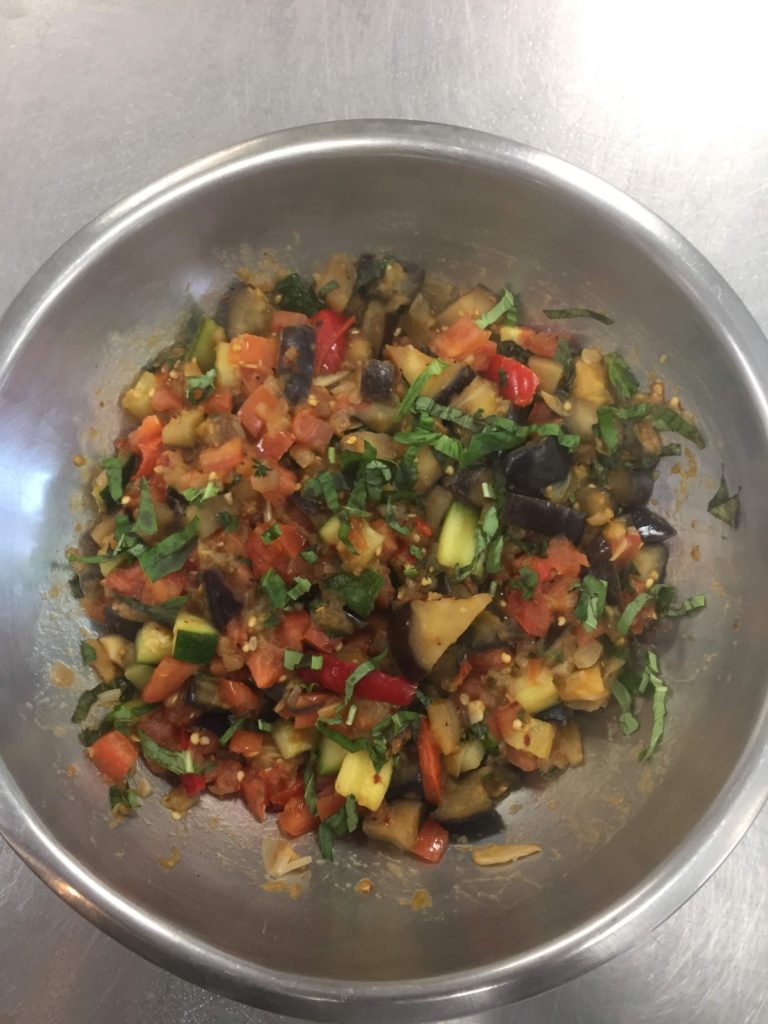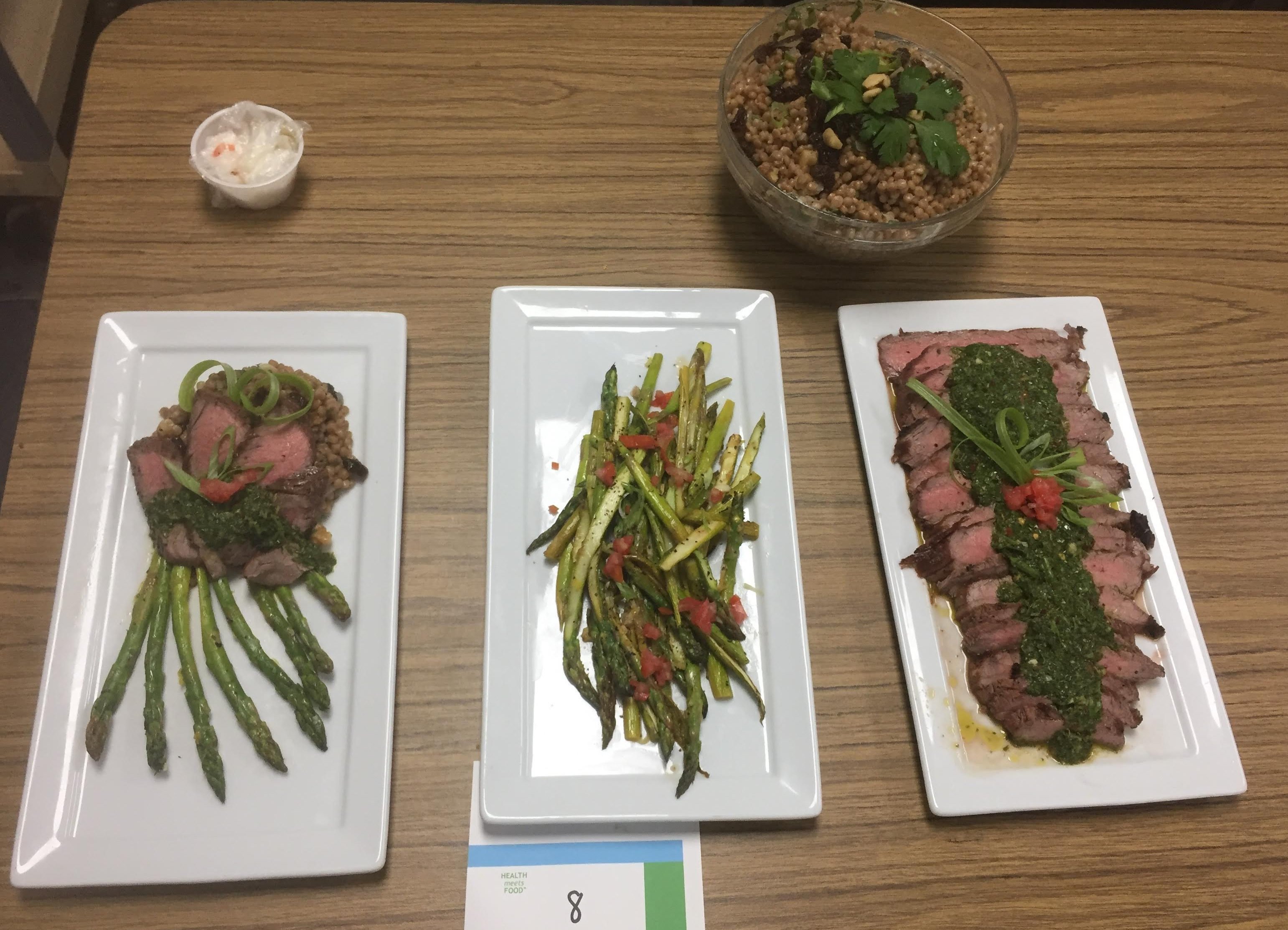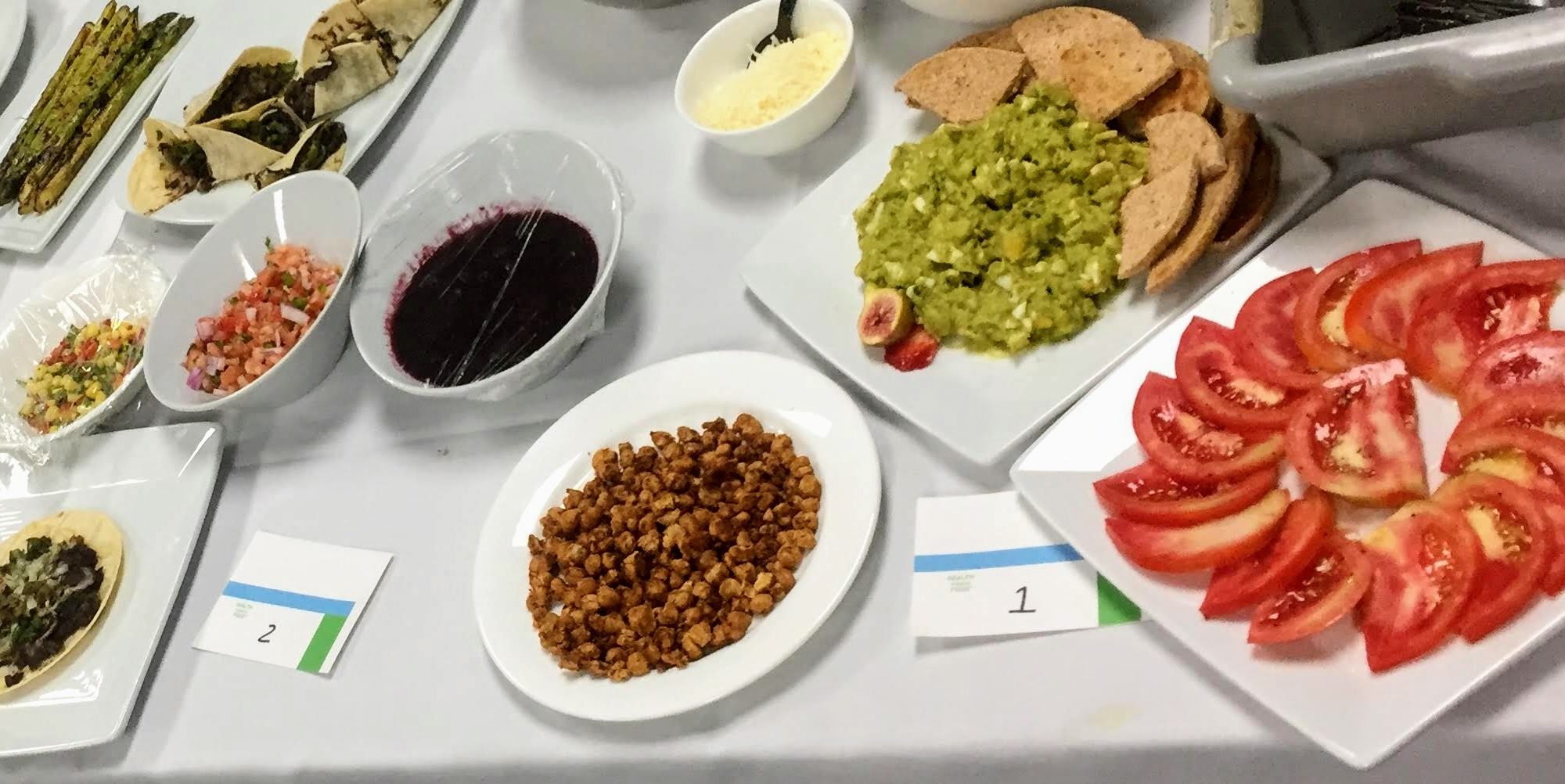Changemaker Catalyst award recipient Isabella Van Savage attended the Health Meets Food Conference in June of 2018 to deepen her understanding of the “food as medicine” mantra and public health nutrition. Isabella is a junior majoring in Public Health and Cell and Molecular Biology, and is currently president of Tulane Veggie Club.
Chiffonading basil at Delgado Kitchen, analyzing fruit and vegetable space in convenience stores post-Katrina, and dissecting the gut microbiome just begin to cover the activities and topics covered at the Health Meets Food: The Culinary Medicine Conference 2018. This conference, sponsored by the Goldring Center for Culinary Medicine at Tulane University, hosted over 240 health professionals with a hunger for a healthier America, focusing on how to integrate the “food as medicine” mantra into healthcare. As the only undergraduate at this summer conference, I walked into the Jung Hotel of New Orleans on a warm, Friday morning a little intimidated. But once I got coffee and started chatting with dietitians and medical students, I was eager to listen to the day’s presentations.
Day 1–Food Security
The morning began with an opening presentation on how to market healthy food. You could just grab an orange from the cafeteria, but wouldn’t you rather eat a “Louisiana Satsuma from Citrus Farms”? The following presentations were addressed through the lens of improving health outcomes through access to healthy food, which piqued my interest as a Public Health student. Topics included: addressing the density of small convenience stores, rather than large supermarkets in the low-income neighborhoods of New Orleans; presenting the non-profit food delivery service Manna, which serves the HIV+ community of Philadelphia; and discussing food insecurity as a women’s health issue. Thoughtful commentary on accessibility, variety, and cultural implications of food ensued.

After a healthy lunch of a southwest tofu wrap and kale quinoa salad, we divided into groups and drove over to Delgado Kitchen to prepare meals in a Food Network “Chopped”-esque atmosphere. Compared to the “typical” college student diet of Ramen and Hot Pockets, I thought I was a pretty decent chef. Ha, I had a lot to learn! Working with a dietician who prepares meals for the homeless, we made ratatouille, a French stewed vegetable dish, and I learned some new chopping techniques. In pairs, we presented the nutritional values of our dishes and discussed clinical applications. After a big first day, I was tired but excited for the next morning.
Day 2–Food in Medicine
Driving back to Delgado Kitchen, we had another kitchen takeover, and this time I got the privilege to work with a certified chef. Our Saturday dish included chimichurri flank steak, raisin couscous, and charred asparagus. We talked about how we could tailor our meals for people with celiac disease, which causes an immune response to gluten. Doctors detailed diagnoses and dietitians listed off gluten-free whole grains. This made me think about the invaluable interaction and communication between doctors (especially in primary care!) and dietitians. This thought segued into the day’s presentations.

First, we heard about variety in the gut microbiome, which is why it’s important to “eat the rainbow” (fruit and veggies, not Skittles!) Next, there was the positive effects of “mindful” eating, one of the hottest psychology trends of 2018. Finally, a representative from the School of Medicine in Greenville, North Carolina gave a presentation on lifestyle medicine. Lifestyle medicine is an emerging specialty that uses evidence-based knowledge to prevent chronic disease through plant-based diet, exercise, sleep, and many other controllable factors. Chronic diseases, such as heart disease and diabetes, are the leading cause of death in the United States. Patient education and prevention are the keys to a healthier America.
Day 3–Closing
On Father’s Day morning, the conference started to thin out a little, but that didn’t stop the discussion and presenters. There was a presentation on “Antibiotic Resistance in Animal Agriculture”, highlighting the misuse of antibiotics in both humans and animals. Agricultural use of antibiotics can spread antibiotic-resistant bacteria, destroying human’s first line of defense, which could lead to a global public health problem. “Healthy Food in Healthcare” was another presentation that focused on environmental nutrition: less meat, more local foods, produce prescriptions, and education. Overall, nutrition plays a major role in disease prevention and should not be brushed aside.
As a Changemaker Catalyst recipient, I left this conference impressed by the variety of successful medical professionals and career opportunities that link nutrition with medicine. I feel lucky to be in a position where so many doors can open if I choose to knock on them. Together, we can prevent chronic disease and educate the public about nutrition.
Thanks to the Taylor Center for making this opportunity possible!
